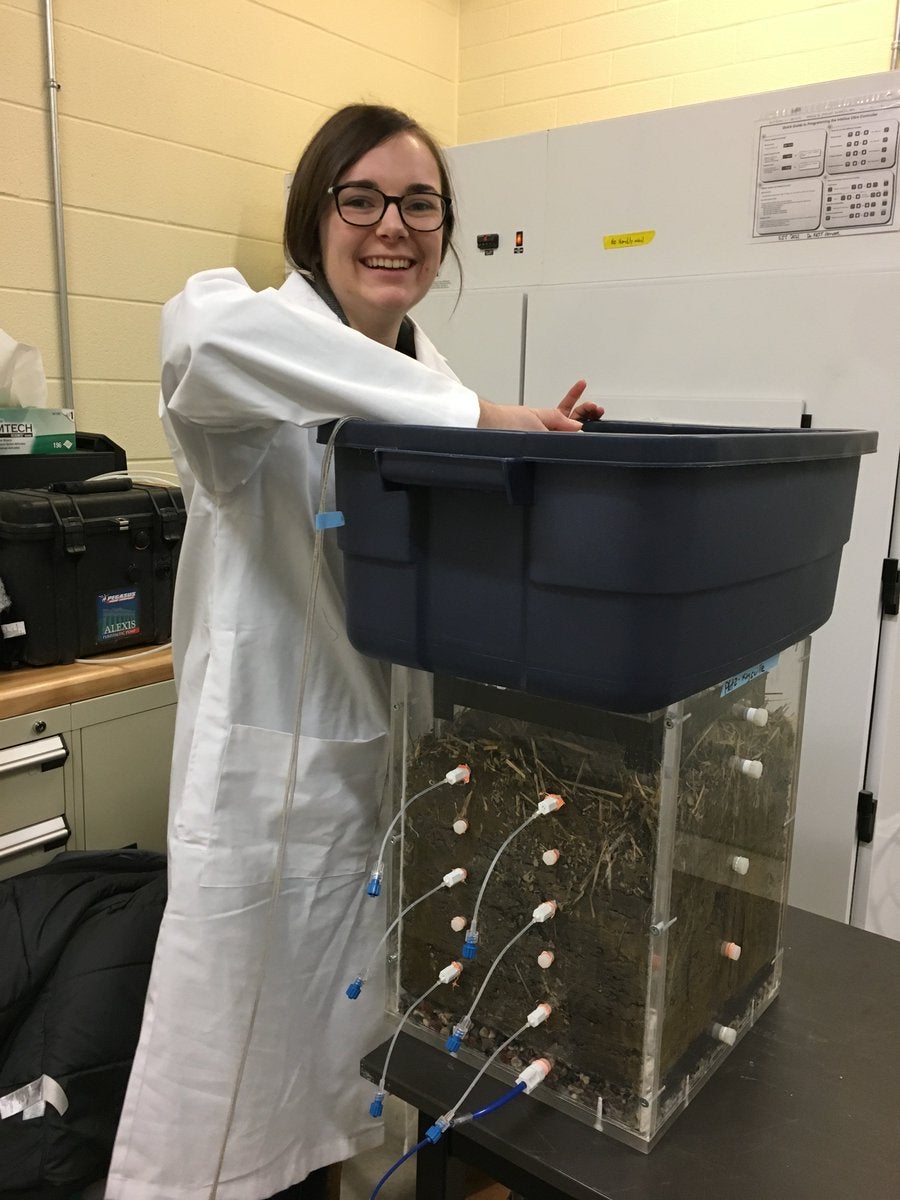
New research from Water Institute members Merrin Macrae, professor in the Department of Geography and Environmental Management, Fereidoun Rezanezhad, professor in the Department of Earth and Environmental Sciences, and MSc student Kirsten Grant, provides new insights on the benefits of sub-surface fertilizer banding in no till soils to the Ontario farming community.
Once touted as the poster child for soil conservation and environmental sustainability, no-till has recently come under fire from some who are concerned about phosphorus movement into watercourses. Without regular tillage to break soils up, macropores – worm holes and old root channels – have been identified as pathways for dissolved phosphorus moving from the field to tile systems. Some have suggested that water quality may be the trade-off for no-till’s other soil benefits. The new research has shown that there’s no reason why no-till and minimal loss of phosphorus have to be an either-or proposition. It just comes down to how you apply fertilizer.
“The key factor is the sub-surface banding of fertilizers. We often see reduced loads (of phosphorus) coming out of fields where sub-surface placement is used,” says University of Waterloo researcher Merrin Macrae.
Their research looked at clay and silt loam soil under environmental conditions commonly seen during the non-growing season in Ontario, when most of the phosphorus runoff typically occurs: autumn rains, periodic snow melts and freeze-thaw cycles during winter, and the soaking spring showers that can create “duck pond flooding” in fields, Macrae notes.

Macrae sees the key part of this research is understanding why there’s a different outcome depending on fertilizer placement. “With banding you’re essentially cutting the phosphorus off from those transport pathways, especially in clay but also in other soil types in winter.” Macrae says when fertilizer was broadcast and banded at the same rate, there was a 60 per cent reduction “in what came out at the bottom” with banding. But because banding generally involves a much lower rate of phosphorus “the true benefits would be even greater.
Kirsten Grant examining soil columns.